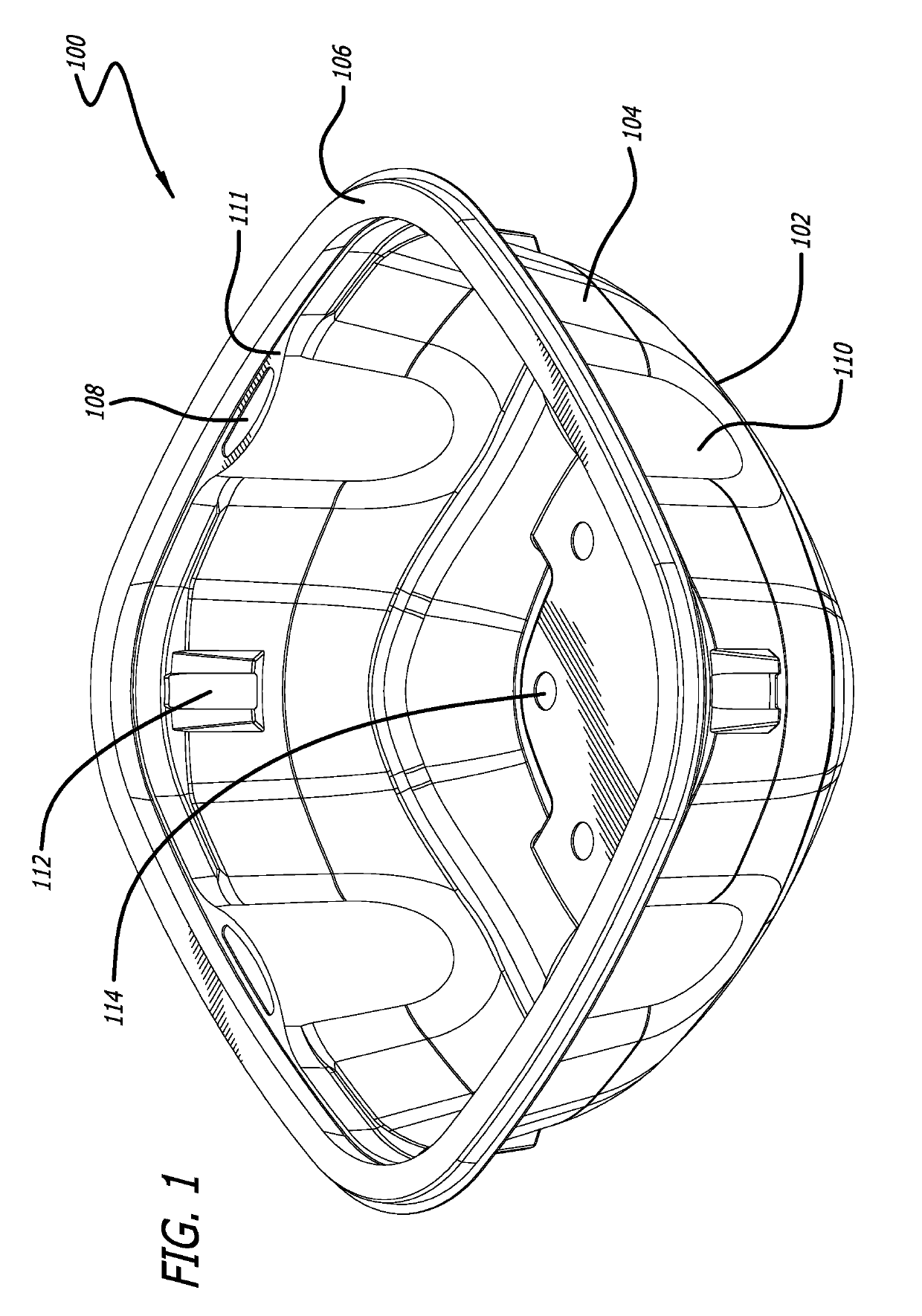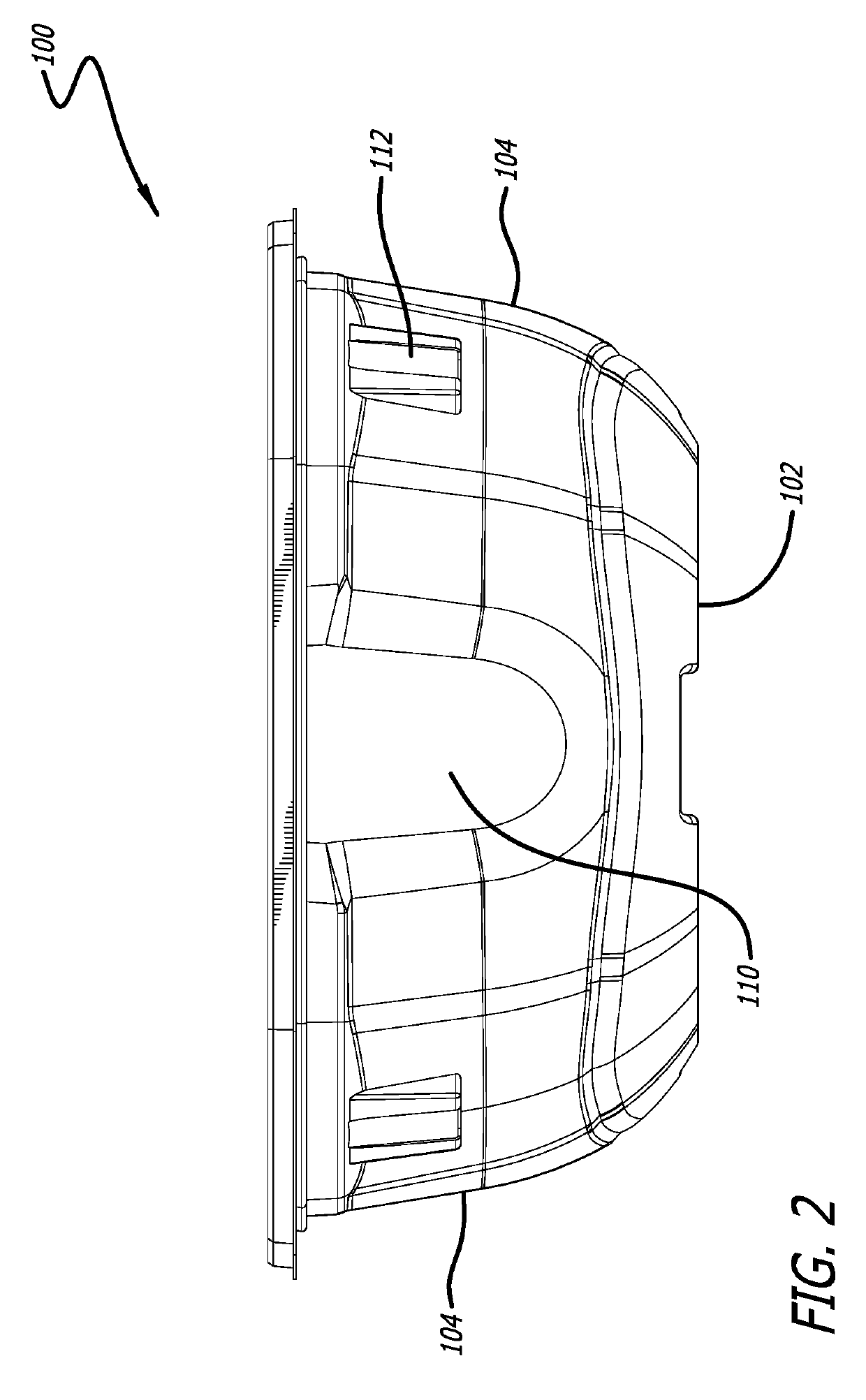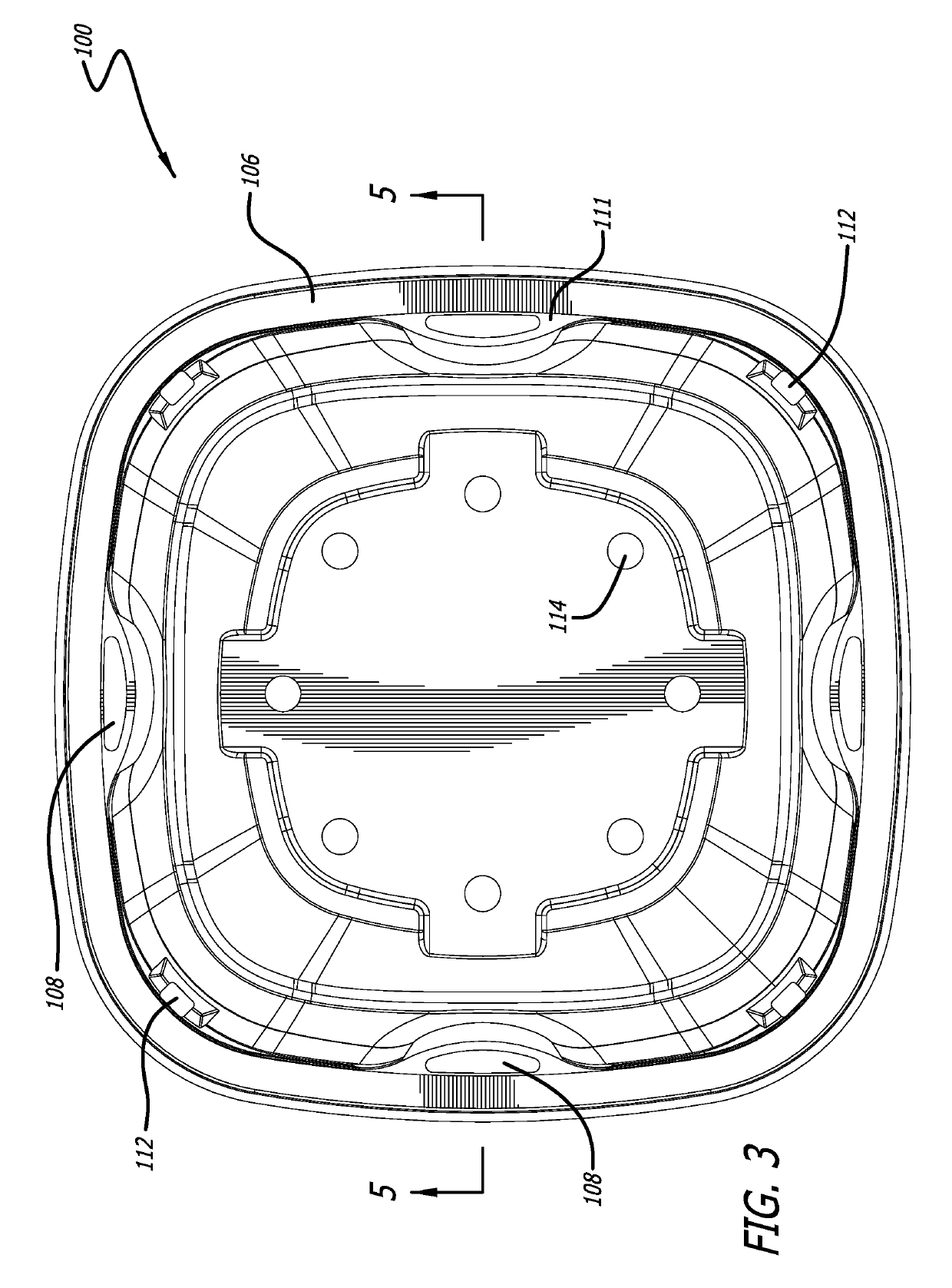Ventilated container for produce
a technology for produce and containers, applied in the field of containers, can solve the problems of ethylene gas exposure for fruits and vegetables for a few days, inability to properly ventilate conventional produce containers, and significant losses for growers, processors, retailers, consumers, etc., and achieve the effects of improving the rigidity of the container, improving the adherence, and improving the ventilation inside the container
- Summary
- Abstract
- Description
- Claims
- Application Information
AI Technical Summary
Benefits of technology
Problems solved by technology
Method used
Image
Examples
first embodiment
[0068]FIGS. 1-7 illustrate perspective, front, top, bottom, and cross-sectional views of container 100 in accordance with the present invention. As shown in FIG. 1, in accordance with the present invention, container 100 includes a bottom 102, sidewalls 104, and a rim 106 having a flattened top surface. Sidewalls 104 extend upwardly from bottom 102, and bottom 102 and sidewalls 104 form an interior cavity of container 100. The lower portions of sidewalls 104 are attached to bottom 102 proximate the perimeter of bottom 102. At least adjacent the upper and lower portions thereof, sidewalls 104 have a complete perimeter. The upper portions of sidewalls 104 are connected to rim 106. Each of sidewalls 104 includes at least one ventilation opening 108 located proximate rim 106 of container 100.
[0069]As illustrated in FIG. 1, in a first embodiment of the present invention, rim 106 extends outwardly from the top of sidewalls 104 approximately 0.3 inches to 0.5 inches, thereby the flattened ...
second embodiment
[0082]As shown in FIGS. 8-11, in accordance with the present invention, ventilated container for produce 200 has a generally square configuration, having a length and a width of approximately 7.5 inches and a height of approximately 2.7 inches.
[0083]As shown in FIGS. 12-15, similar to the second embodiment of the present invention, referring to FIGS. 13-15, ventilated container for produce 300 has a generally square configuration, except the different height. Container 300 has a length and width of approximately 7.5 inches and a height of approximately 3.5 inches.
third embodiment
[0084]As shown in FIGS. 16-20, in accordance with the present invention, ventilated container for produce 400 has a generally square configuration. Bottom 402 includes a plurality of integrally formed, inwardly protruding ribs 420. The ribs 420 can stiffen the base and can elevate produce from liquid within the container 400. Furthermore, bottom 402 with ribs 420, compared to a container having a typically flat bottom, can give container stability and make stacking easier.
[0085]As shown in FIGS. 21-26, alternatively, ventilated container for produce 500 has a generally rectangular configuration, having a length of approximately 14.55 inches, a width of approximately 7.90 inches, and a height of 3.08 inches. Ventilated container for produce 500 includes a first sidewall 504 having one ventilation opening 508 located proximate rim 506 of container 500 and a second sidewall 504′ having two ventilation openings 508 located proximate rim 506 of container 500. Bottom 502 has a plurality o...
PUM
 Login to View More
Login to View More Abstract
Description
Claims
Application Information
 Login to View More
Login to View More - R&D
- Intellectual Property
- Life Sciences
- Materials
- Tech Scout
- Unparalleled Data Quality
- Higher Quality Content
- 60% Fewer Hallucinations
Browse by: Latest US Patents, China's latest patents, Technical Efficacy Thesaurus, Application Domain, Technology Topic, Popular Technical Reports.
© 2025 PatSnap. All rights reserved.Legal|Privacy policy|Modern Slavery Act Transparency Statement|Sitemap|About US| Contact US: help@patsnap.com



